Dominique Luchart's Blog, page 562
July 21, 2021
Watch astronauts move their SpaceX Dragon spaceship in orbit today ahead of Boeing’s Starliner launch, ,
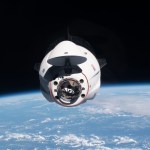
NASA’s SpaceX Crew-2 astronauts on the International Space Station are preparing to relocate the Crew Dragon spacecraft Endeavour ahead of Boeing’s Starliner spacecraft arrival next weekend.
The relocation will take place on Wednesday (July 21), when NASA astronauts Shane Kimbrough and Megan McArthur, Japan Aerospace Exploration Agency (JAXA) astronaut Akihiko Hoshide and European Space Agency (ESA) astronaut Thomas Pesquet will move Endeavour from the forward port of the space station’s Harmony module to the space-facing port. The relocation maneuver will take less than one hour to complete, as the team plans to undock the spacecraft at 6:45 a.m. EDT (1045 GMT) and then re-dock at 7:32 a.m. EDT (1132 GMT), according to a statement from NASA.
Live coverage of the port relocation will start at 6:30 a.m. EDT (1030 GMT) and you can watch it on NASA Television, the NASA app or the agency’s website. You can also stream live coverage of the event at Space.com.
Related: SpaceX’s Crew-2 mission to the International Space Station in photos
Moving Endeavour will make room for NASA’s Boeing Orbital Flight Test-2 (OFT-2) mission, which is slated to launch to the space station on July 30 and arrive the next day. Boeing’s CST-100 Starliner spacecraft will dock at Harmony’s forward port, marking the first time two different U.S. commercial crew spacecraft will be docked to the space station at the same time, according to the statement.
The OFT-2 mission will be Boeing’s second test flight attempt, designed to test the end-to-end capabilities of its Starliner spacecraft, including launch, docking, atmospheric re-entry and a desert landing in the western U.S. Boeing’s first Starliner test flight launched in December 2019, but the spacecraft did not reach the station as planned due to a series of technical problems.
“The uncrewed mission will provide valuable data about Boeing’s crew transportation system and help NASA certify Starliner and the United Launch Alliance Atlas V rocket for regular flights with astronauts to and from the space station,” NASA officials said in the statement.
Wednesday’s port relocation represents the second time this year that astronauts have had to shuffle spacecraft around at the space station. In April, NASA’s SpaceX Crew-1 astronauts completed the first commercial crew port relocation at the orbiting lab when they moved Crew Dragon Resilience ahead of the SpaceX Crew-2 arrival.
The SpaceX Crew-2 mission launched on April 23 from NASA’s Kennedy Space Center in Florida and docked to the space station on April 24. The crew is targeting an early-to-mid November return to Earth and will splash down off the coast of Florida.
SpaceX’s next crew rotation mission, Crew-3, is slated to launch to the space station on Oct. 31. Crew-3 includes NASA astronauts Raja Chari, Tom Marshburn and Kayla Barron, and ESA astronaut Matthias Maurer. They will launch on a new Crew Dragon spacecraft from Launch Complex 39A at NASA’s Kennedy Space Center in Florida for a six-month science mission at the orbiting lab. NASA and SpaceX have a total of six certified crew missions planned as a part of the agency’s Commercial Crew Program, according to the statement.
Follow Samantha Mathewson @Sam_Ashley13. Follow us on Twitter @Spacedotcom and on Facebook.
Join our Space Forums to keep talking space on the latest missions, night sky and more! And if you have a news tip, correction or comment, let us know at: community@space.com.
The post Watch astronauts move their SpaceX Dragon spaceship in orbit today ahead of Boeing’s Starliner launch, , appeared first on NEWDAWN Blog.
The Dish ‘fix’ for the T-Mobile-Sprint merger seems more shortsighted than ever, Karl Bode

To sell regulators on their $26 billion mega merger, T-Mobile and Sprint executives told anyone who’d listen that the deal would provide near-miraculous benefits. But economists warned that US telecom merger promises are historically meaningless, and the reduction in overall competitors would — sooner or later — result in higher prices and job cuts.
Instead of heeding their warnings and blocking the deal, US antitrust enforcers concocted an elaborate workaround: they would erect Dish Network as the nation’s new fourth major wireless carrier. Under the plan Dish received some T-Mobile spectrum, the Boost Mobile prepaid brand, and the assurance that T-Mobile would help Dish run a Mobile Virtual Network Operator (MVNO) while it got its own nationwide network up and running.
But squabbling between the companies culminated this week in Dish announcing it would be replacing T-Mobile with AT&T as its primary partner, indicating that T-Mobile and Dish were simply incapable of getting along, and the government was never that interested in forcing them.
“If T-Mobile is able to shirk this regulatory obligation with impunity, what’s to prevent future consent orders from being ignored?” Hal Singer, an economist who testified against the merger approval tells The Verge.
Earlier this year, Dish called T-Mobile a “grinch” for shutting down its CDMA network earlier than Dish had expected. In complaints to state and federal regulators, Dish accused T-Mobile of reneging on its merger promises, and claimed the shutdown risked leaving many of Boost’s 9 million wireless customers without service in 2022. T-Mobile has denied fault and effectively accused Dish of not understanding its own agreement.
So far the Biden administration, focused largely on Big Tech policy conversations, hasn’t taken much action in the telecom space. The administration has yet to fully staff the FCC, and only just appointed a DOJ antitrust enforcer this week. Dish’s deployment goals are far off, and any meaningful government action, if it comes at all, likely remains years away.
The deal gives Dish until 2025 to deploy its wireless network to 70 percent of the population. Given that 70 percent of the US lives on roughly 3 percent of the country’s landmass, that shouldn’t have been a particular challenge. (Dish hasn’t given any public indication that it’s nearing that goal yet.) But it’s getting to 95 percent coverage where Dish needs help, given that the remaining chunk lives on ten times the land mass as the initial 70 percent.
That’s where Dish’s $5 billion deal with AT&T comes in. Under the proposal, AT&T will grant Dish MVNO customers access to AT&T’s 4G and 5G networks in rural and harder to reach markets, as Dish focuses on building out its own 5G network in major cities. Dish will still have access to T-Mobile’s network until 2027, but AT&T will now be Dish’s primary partner.
In a research note to investors, Wall Street analyst Craig Moffett argues that while Dish’s relationship with T-Mobile may have soured, the deal with AT&T likely increased Dish’s chance of survival as a wireless operator — for the time being.
“Under the T-Mobile agreement, Dish had until 2025 to satisfy the FCC, but only two more years afterwards to satisfy the much more exacting demands of customers,” Moffett says. “That was always the real challenge.”
Given that AT&T has never offered CDMA access, the arrangement won’t solve Dish’s complaints about T-Mobile’s decision to shutter its CDMA network, potentially harming Boost Mobile subscribers. AT&T, meanwhile, nabs significant wholesale revenue with the dangerous bet that Dish will never become successful enough to erode AT&T market share.
But with Dish bleeding wireless and TV subscribers at an alarming rate, the clock is ticking on Dish’s overall survivability. In the next six years, Dish has to remain financially viable, build out a massive and popular next-generation wireless network, keep state and federal regulators happy, and somehow steal meaningful market share from a US telecom sector historically averse to being meaningfully disrupted by competition.
It’s a big ask for a company long criticized — including by T-Mobile in 2018 — for gobbling up troves of valuable spectrum, then not delivering on its promises to put that spectrum to use. While the government deal bars Dish from selling its spectrum for six years, analysts have long pondered if Dish will just string regulators along, sell its spectrum, then use the immense profits to laugh off any remaining regulatory, legal, and contractual obligations.
Moffett tells The Verge that Dish has already spent upward of $10 billion in long-term cellular tower leases, and risks losing its spectrum in addition to financial penalties for missing deployment goals. Singer, however, remains unimpressed by the integrity of the merger arrangement with the government and still thinks an early Dish exit remains possible.
“The decree always gave Dish an easy out,” Singer says. “The real target of the regulation was T-Mobile. And now T-Mobile is getting to slither out.”
The saga could also end with AT&T buying Dish Network, AT&T nabbing Dish’s vast spectrum holdings, the US wireless industry consolidating even further, and everybody involved pretending none of this ever happened.
Meanwhile, other merger promises remain unfulfilled. T-Mobile’s promise that the deal would create new jobs — still viewable over at the company’s website — wound up not being worth much. Despite claiming the deal would be “jobs positive from day one and every day thereafter,” the company has eliminated 5,000 positions so far, much as critics like Singer predicted.
Historically, antitrust enforcers are supposed to look at the available evidence of a proposed union and act accordingly. In the case of Sprint and T-Mobile, the Trump FCC approved the deal before even seeing impact analysis, and the Trump DOJ’s top antitrust enforcer Makan Delrahim personally worked with all three companies to ensure deal approval.
Instead of simply blocking the merger and finding a way to prop up Sprint, the resulting solution always required a great deal of optimism in both the integrity of corporate merger promises and the competency of US regulators. Now consumers are left waiting for a network that may never arrive, based on relationships that were sour from the start.
“Just as Delrahim scripted it,” Singer jokes.
The post The Dish ‘fix’ for the T-Mobile-Sprint merger seems more shortsighted than ever, Karl Bode appeared first on NEWDAWN Blog.
Apple AirPods update to arrive later this year with iPhone SE refresh coming 2022: report, James Vincent

Apple will start production on updated AirPods next month, with plans to launch the third-generation earbuds later this year, according to a report from Nikkei. It’s the latest rumor regarding Apple’s product schedule, which will reportedly include an all-5G iPhone line-up in 2022, including a revamped iPhone SE sporting the as-yet-unannounced A15 processor.
A refresh of Apple’s entry-level AirPods have been rumored for a while now, with previous generations launched in 2016 and 2019. Back in May, Bloomberg reported that the earbuds will have a design similar to the AirPods Pro, with “a new case and shorter stems poking out of the bottom of each one.” If Nikkei is right about production starting next month, we can expect to see the new-look AirPods revealed alongside the iPhone 13 this September.
In addition to the earbuds, Apple might also release new versions of the MacBook Pro later this year, says Nikkei. This rumor seems pretty solid, with previous reports suggesting that the new laptops will be available in 14-inch and 16-inch screen sizes, with next-gen Apple-designed Arm processors, the return of MagSafe charging, and the end of the Touch Bar.
Looking ahead to 2022, Apple is expected to equip all new iPhones that year with 5G compatibility. Nikkei says the company will not update the smaller iPhone 12 Mini in 2022 after disappointing sales (though it will offer an iPhone 13 Mini later this year).
Instead, in 2022, the company will refresh the cheaper iPhone SE with 5G and an A15 processor. The updated iPhone SE will reportedly use a Qualcomm chip for 5G compatibility, an interesting note given that Apple is reportedly building its own modems in order to further wean itself off third-party designs. The new iPhone SE will also reportedly keep its 4.7-inch LCD displays, says Nikkei, making it the obvious choice for consumers who prefer a smaller device. Earlier reports about the third-generation SE said it will also retain the home button and Apple’s Touch ID sensor.
The post Apple AirPods update to arrive later this year with iPhone SE refresh coming 2022: report, James Vincent appeared first on NEWDAWN Blog.
July 20, 2021
The new RadRover is Rad Power Bikes’ first e-bike with an integrated battery, Andrew J. Hawkins
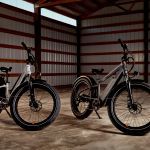
The RadRover, Rad Power Bikes’ flagship electric bike, is getting another major upgrade. The bike will be the first from the Seattle-based company to feature a semi-integrated battery. And when it’s released later this year, it will be the most expensive model in Rad Power Bikes’ lineup to date.
The RadRover 6 Plus (it’s a mouthful of an official name) comes with a bevy of new parts, including hydraulic disc brakes, a custom geared-hub motor, a new ergonomic frame, and an improved LED display that’s easier to use.
But the most eye-catching new detail is certainly the semi-integrated battery, a first for the company. Rad Power Bikes’ batteries tend to be larger (672 amp-hour on average) than a lot of their European equivalents and are therefore harder to integrate into the frame of the bike. As such, the company has opted for externally mounted batteries that can be an eyesore but also practical, thanks to their ability to be removed for easier charging.
The new RadRover’s battery can still be removed, but it now sits more snuggly inside the down tube of the frame. It’s certainly a cleaner look overall, while refraining from the completely integrated and nonremovable battery of companies like VanMoof, Gogoro, and others.
Like the previous iterations, the RadRover 6 Plus will have fat tires for outdoor riding and recreation. And it will come in two frame types: high-step or step-through. The bike is available for preorder today and will start shipping on September 21st.
The question is whether the new look will help the RadRover win some new customers. The more expensive price tag — $1,999 — certainly won’t help, but e-bike prices have been steadily increasing over the last year. Blame tariffs, supply chain constraints, and other factors for these increases, which is forcing the companies to reevaluate their costs.
Unlike a lot of its competitors, Rad Power Bikes has a comfortable financial cushion, thanks to a $150 million investment round from earlier this year. At the time, the company said the money would help it grow beyond the world of two-wheeled transportation — though it has yet to reveal exactly how.
The post The new RadRover is Rad Power Bikes’ first e-bike with an integrated battery, Andrew J. Hawkins appeared first on NEWDAWN Blog.
Amateur astronomer discovers a tiny moon around Jupiter, ,
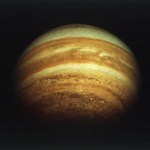
An amater astronomer has discovered a previously unknown moon around Jupiter after poring over old telescope images, a major first.
“I’m proud to say that this is the first planetary moon discovered by an amateur astronomer!” moon searcher Kai Ly said in a July 8 Sky and Telescope report that details the discovery.
Jupiter may have dozens or even hundreds of undiscovered moons orbiting around it. This massive planet boasts a substantial gravitational field that allows it to capture space debris into its orbit. Jupiter currently hosts at least , and the number continues to grow. The latest discovery was made by Ly, an amateur astronomer, and it’s the latest addition to the catalogue of the Carme group of Jovian satellites.
Carme and its crew are small, odd-shaped space rocks. They orbit in the opposite direction of Jupiter’s rotation — a phenomenon called retrograde — and the group travels around Jupiter at an extreme tilt relative to the giant planet’s orbital plane, according to NASA. Carme is the largest of the group, with a mean radius of 14 miles (23 kilometers). Carme is the parent rock to the amateur astronomer’s discovery and to the other 22 known members of the group. Astronomers think that Carme was an asteroid captured by Jupiter’s gravity, and that its group are the bits that broke off of it following a cosmic collision.
Related: A lander on Jupiter’s icy moon Europa may have to dig at least 1 foot down to find signs of life
[image error]
From bottom to top, the bright points in this image feature Earth’s moon, Venus and Jupiter. The curved horizon at the top is Earth’s crescent. Astronaut Scott Kelly captured this view from the International Space Station in 2015. (Image credit: NASA/Scott KellyFrom bottom to top, the bright points in this image feature Earth’s moon, Venus and Jupiter. The curved horizon at the top is Earth’s crescent. Astronaut Scott Kelly captured this view from the International Space Station in 2015.)Ly made their finding when looking online at a data set from 2003 that had been collected by researchers at the University of Hawai’i using the 3.6-meter Canada-France-Hawaii Telescope (CFHT). Ly paid special attention to the imagery collected in February of that year, when the moons were at their apparent brightest. This was caused by a phenomenon known as opposition, when the sun and a given planet appear in opposite parts of Earth’s sky. Our home planet was sitting in the middle of a line between the sun and Jupiter in February 2003, allowing astronomers on Earth to clearly see Jupiter’s system illuminated by the star.
Ly used observations from another telescope called Subaru to establish the object’s 22-day arc, which showed the moon candidate was likely bound to Jupiter’s gravity. This baseline allowed them to find and confirm the moon’s existence with other datasets, too.
In the Space and Telescope article, Ly described the exciting discovery as “a summer hobby before I return to school.”
This rock is currently designated EJc0061, but does not yet have a formal name. When it does, it will likely end with the letter e like Carme. When NASA officials explained Carme’s moniker, they said “a name ending in ‘e’ was chosen in accordance with the International Astronomical Union’s policy for designating outer moons with retrograde orbits.”
Follow Doris Elin Urrutia on Twitter @salazar_elin. Follow us on Twitter @Spacedotcom and on Facebook.
Join our Space Forums to keep talking space on the latest missions, night sky and more! And if you have a news tip, correction or comment, let us know at: community@space.com.
The post Amateur astronomer discovers a tiny moon around Jupiter, , appeared first on NEWDAWN Blog.
How to watch Blue Origin launch Jeff Bezos into space today, ,
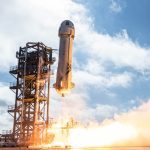
Blue Origin’s New Shepard rocket is counting down for its first crewed flight today (July 20), when it will launch company founder Jeff Bezos and three others into space, and you can watch the whole thing live.
The launch of New Shepard’s first crewed flight will be broadcast beginning at 7:30 a.m. EDT (1130 GMT) at BlueOrigin.com. Liftoff is scheduled for 9 a.m. EDT (1300 GMT), but that will depend on the weather forecast and other technical factors.
A typical New Shepard flight lasts 11 minutes, and a live broadcast with the astronauts will be available at BlueOrigin.com after the landing, Blue Origin said in a press release Monday (July 12). The company will also be sharing mission updates all day via @BlueOrigin on Twitter.
Related: Blue Origin’s launch with Jeff Bezos: Everything you need to know
Riding along with Bezos will be Mercury 13 aviator Wally Funk, whom he personally invited to join the crew, along with his brother Mark and a so-far anonymous auction winner who paid $28 million for a seat.
The New Shepard rocket and capsule will launch from Launch Site One, a remote area in the west Texas desert that will be closed to all spectators, even along nearby sections of State Highway 54, Blue Origin said.
Bezos (best known for creating Amazon) founded Blue Origin in 2000 with the hopes of eventually bringing rich space tourists to suborbital space. Sheer altitude has become one of the points in which Blue Origin hopes to differentiate itself from competitor Virgin Galactic, which was founded in 2004 and just launched its own billionaire founder Richard Branson on Sunday (July 11).
[image error]
A New Shepard launch conducted in December 2019. (Image credit: Blue Origin)Days before Branson’s flight, Blue Origin released an infographic snarkily comparing the two systems and criticizing Virgin Galactic’s design decision to fly below the Karman line, the 62-mile (100 kilometers) mark that is internationally recognized as the boundary of space. That said, all Virgin Galactic astronauts do soar well above 50 miles (80 km), the demarcation point recognized by NASA, the U.S. military and the Federal Aviation Administration.
The billionaire vs. billionaire battle of Branson and Bezos has also prompted a wider discussion about affordability of space tourism, although some people of more ordinary means like Funk have been comped a seat aboard early flights. A typical seat on Virgin Galactic costs $250,000; usual per-seat pricing for New Shepard as not yet been revealed.
Follow Elizabeth Howell on Twitter @howellspace. Follow us on Twitter @Spacedotcom and on Facebook.
Join our Space Forums to keep talking space on the latest missions, night sky and more! And if you have a news tip, correction or comment, let us know at: community@space.com.
The post How to watch Blue Origin launch Jeff Bezos into space today, , appeared first on NEWDAWN Blog.
Disabled space enthusiasts can now apply for Zero Gravity space training, ,
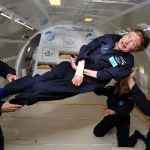
For people who are disabled and have always dreamed of training to fly to space, the SciAccess Initiative has opened up applications to disabled crew participants for a Zero-G parabolic flight.
The initiative, which works to make STEM (science, technology, engineering and mathematics) more accessible through a series of programs, announced the launch of its latest program: Mission: AstroAccess yesterday (July 15). This new program will fly a diverse group of disabled people on a parabolic flight aboard the Zero Gravity Corporation (Zero-G)’s “G-Force One” plane, which uses a series of parabolas to create weightlessness in the plane’s cabin.
With this flight, the program hopes that the crew will be able to help to expand our understanding of how disabled people can safely travel and work in space, according to a statement from the program. This is extremely valuable information as space becomes more accessible. For example, earlier this year, the European Space Agency put out a call for “parastronauts,” or astronauts with physical disabilities.
“Space is not just part of humanity’s future – it is a place where we can rethink life on earth today,” George Whitesides, Mission: AstroAccess Project Lead, said in a statement. “With this flight we hope to lay the foundation for future disabled space explorers.”
Related: How to become an astronaut
“Over 500 people have flown to space so far and not one of them has had a significant disability. One of our key mission goals is to change this,” Anna Voelker, Mission: AstroAccess Project lead and executive director of the SciAccess Initiative and the Aspen Science Center, said in the same statement. “Implementing accessibility is crucial not only for inclusion, but for the safety and success of all space explorers.”
While there has yet to be a disabled astronaut in space, it will not be the first time that a disabled person will have flown on a Zero-G parabolic flight. Most notably, in 2007, famed theoretical physicist Stephen Hawking flew aboard a Zero-G flight, and experienced weightlessness. While weightless, he was able to float outside of his wheelchair. Hawking described the experience as “true freedom … I was Superman for those few minutes,” according to the BBC.
Related: What It’s Like to Become a NASA Astronaut: 10 Surprising Facts
“Our mission is to change outer space and change the world,” Sheri Wells-Jensen, associate professor of linguistics at Bowling Green State University, added in the statement. “If you are a disabled person who is confident, enthusiastic, playful, and literally willing to float upside down to change the future, we are looking for you!”
Interested in applying? Applications are now open through Aug. 15 and can be located here.
The program is open to any disabled adult over the age of 18 who is currently living in the U.S. If you have questions about the program or application process, Mission: AstroAccess will be holding a free webinar open to the public on July 21.
Email Chelsea Gohd at cgohd@space.com or follow her on Twitter @chelsea_gohd. Follow us on Twitter @Spacedotcom and on Facebook.
Join our Space Forums to keep talking space on the latest missions, night sky and more! And if you have a news tip, correction or comment, let us know at: community@space.com.
The post Disabled space enthusiasts can now apply for Zero Gravity space training, , appeared first on NEWDAWN Blog.
On This Day in Space! July 20, 1969: Apollo 11 Astronauts take the first moonwalk, ,
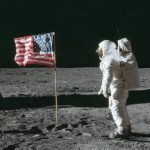
On July 20, 1969, human beings walked on the moon for the very first time!
Apollo 11 astronauts Neil Armstrong and Buzz Aldrin exited their lunar lander and planted their moon boots on the lunar surface at about 11 p.m. EDT (0300 GMT on July 21).
Image 1 of 3[image error]
NASA astronaut Edwin (Buzz) Aldrin Jr stands beside the United States flag during Apollo 11 during a moon walk. (Image credit: NASA)Image 2 of 3[image error]
Astronaut Edwin (Buzz) Aldrin deploys two scientific experiments on the surface of the moon during Apollo 11. (Image credit: NASA)Image 3 of 3[image error]
Astronaut and lunar module pilot Buzz Aldrin is pictured during the Apollo 11 extravehicular activity on the moon. (Image credit: NASA)Armstrong led the way down the ladder. When he took his first step, he famously said, “That’s one small step for a man … one giant leap for mankind.”
Once they found their footing, they got straight to work. They inspected the spacecraft to look for any damage from the landing, set up cameras, collected moon rocks and planted the American flag into the soil. They also strolled around the moon to assess the mobility of their spacesuits.
Catch up on our entire “On This Day In Space” series on YouTube with this playlist.
[image error]
History of NASA: $22.99 at Magazines Direct
Discover the story of how and why NASA was created, its greatest triumphs, darkest days, and of the times it exceeded all possible hopes. A tale of adventure, heroism and resourcefulness, learn of the space agency’s greatest achievements and how — over six decades — the organization has consistently and tirelessly devoted itself to its founding principle: that “activities in space should be devoted to peaceful purposes for the benefit of all humankind”. View Deal
Still not enough space? Don’t forget to check out our Space Image of the Day, and on the weekends our Best Space Photos and Top Space News Stories of the week.
Email Hanneke Weitering at hweitering@space.com or follow her @hannekescience. Follow us @Spacedotcom and on Facebook.
Join our Space Forums to keep talking space on the latest missions, night sky and more! And if you have a news tip, correction or comment, let us know at: community@space.com.
The post On This Day in Space! July 20, 1969: Apollo 11 Astronauts take the first moonwalk, , appeared first on NEWDAWN Blog.
How much will Jeff Bezos’ New Shepard rocket warm the planet?, ,
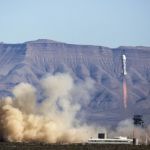
How much pollution is Jeff Bezos going to generate during his trip to space? It turns out that, when it comes to adding greenhouse gases to the atmosphere, Blue Origin’s New Shepard rocket should be among the cleanest launch vehicles around, though climate change concerns from suborbital spacecraft could increase as similar flights take off in the near future.
Rockets aren’t exactly green technology, and their overall environmental impact is still being studied. The vast majority of launches produce things like water vapor, carbon dioxide (CO2), soot, and aluminum oxides, depending on what type of fuel they use, according to a helpful explainer from the website Everyday Astronaut, which covers different aspects of spaceflight.
New Shepard, which billionaire Bezos will ride on its initial crewed flight today (July 20), is combining liquid hydrogen and liquid oxygen in its engine to generate thrust, meaning “the main emissions will be water and some minor combustion products, and virtually no CO2,” Darin Toohey, an atmospheric scientist at the University of Colorado, Boulder, told Live Science in an email. (Water — H2O — is composed of hydrogen and oxygen.)
Related:
See photos of Blue Origin’s New Shepard rocket
More:
Watch Bezos launch into space in this livestream
Water in rocket exhaust can increase the number of clouds in the atmosphere, Toohey added, including the iridescent “mother-of-pearl” clouds often seen at sunset after a launch. These can impact the upper atmospheric layers known as the mesosphere and ionosphere, but because the number of rocket launches is so low at present, they are not much of a concern in climate modeling, he and a co-author wrote in a 2019 article for Eos, the news magazine of the American Geophysical Union.
That could change as launch rates increase in the near future, and a good deal of the Eos article involves a call for more studies of the potential impact from such flights.
Carbon dioxide pollution from spaceflight is still fairly negligible, with rockets accounting for around 0.0000059% of all CO2 emissions in 2018, according to Everyday Astronaut. (The airline industry was around 2.4% of global CO2 emissions that same year). But while ice and clouds can reflect sunlight back into space and reduce global heat, water vapor is a more potent greenhouse gas than carbon dioxide, and the longer that vapor remains in the atmosphere, the greater it will heat our planet.
RELATED CONTENT
—10 animals that have been launched to space
—What are the chances that Jeff Bezos won’t survive his flight on New Shepard?
—Female firsts: 7 women who broke barriers in science and tech
“Water vapor up in the higher parts of the atmosphere are not completely harmless,” Florian Kordina, who wrote the Everyday Astronaut article, told Live Science in a direct message on Twitter. “But since New Shepard will cut off its engine relatively early in the flight, very little [water] will even get high enough to stay up there.”
The main concern when it comes to rocket flights are small particles such as soot and aluminum oxides, Toohey said. “These can have a disproportionate impact on the atmosphere,” he wrote. “A very small amount can make a big difference.”
In 2010, he and two other researchers modeled the effects of soot injected into the atmosphere from 1,000 private suborbital flights a year and found that they could increase temperatures over the poles by 1.8 degrees Fahrenheit (1 degree Celsius) and reduce polar sea ice levels by 5% to 15%.
But New Shephard’s engine doesn’t produce much in the way of particulates, Toohey said. “It might be among the cleanest of the fuels in that context.”
Originally published on Live Science.
The post How much will Jeff Bezos’ New Shepard rocket warm the planet?, , appeared first on NEWDAWN Blog.
What is suborbital flight? (And why do we care?), ,

Suborbital space missions are in the news as the founders of Virgin Galactic and Blue Origin take their maiden flights. But what exactly does suborbital mean, and does the technology have uses beyond helping billionaires race each other to space?
Today (July 20), Jeff Bezos, founder of Amazon and the world’s richest man, will blast off in the New Shepard rocket built by his private space company Blue Origin. This will be the firm’s first crewed mission and will fly to an altitude of 62 miles (100 kilometers) before landing again at the same launchpad. Bezos was beaten to the edge of space by British entrepreneur Richard Branson, who flew July 11 to an altitude of 53 miles (86 km) in a rocket-powered spaceplane built by his company Virgin Galactic.
Related:
Photos: Blue Origin’s New Shepard mission to space
More:
Watch Bezos launch into space in this livestream
While impressive, both vehicles are very different from standard space rockets.
“The difference, in a nutshell, is that these suborbital flights do not have enough velocity to escape into orbit,” said Stephan McCandliss, a professor of astrophysics at Johns Hopkins University in Maryland.
Orbit refers to the situation where a spacecraft or satellite’s sideways momentum creates a force that perfectly opposes the pull of Earth’s gravity, so that it follows a curved path, constantly falling toward the planet but never getting any closer. When an orbiting spacecraft launches, it starts off vertical but then begins to tilt and pick up horizontal speed once it’s through the thickest part of the atmosphere, so as to generate sufficient momentum to stay in orbit. Getting there is challenging though — the horizontal speed you need to remain in orbit depends on the altitude, but for a low-Earth orbit of 150 miles (240 km) it’s around 17,000 mph (about 27,400 km/h).
“To sustain orbital motion, you have to be moving at almost 8 kilometers a second,” McCandliss told Live Science. “In addition to that, you’ve got to get to the altitude and you have to punch through the atmosphere, and that all takes energy.”
Any rocket without enough energy to reach orbit will instead follow a parabolic trajectory, looping up and then back down again,McCandliss said. But while such suborbital space missions might be short-lived, passengers will still get a mindblowing view of Earth and will also experience several minutes of weightlessness.
Image 1 of 4[image error]
New Shepard’s 15th launch (called mission NS-15) lifted off from Launch Site One in West Texas on April 14, 2021. (Image credit: Blue Origin)Image 2 of 4[image error]
The New Shepard booster is shown here as it landed after New Shepard’s successful mission to space, the 15th launch of the vehicle that took place on . April 14, 2021. (Image credit: Blue Origin)Image 3 of 4[image error]
The New Shepard booster on the landing pad after Mission NS-15’s success on April 14, 2021. (Image credit: Blue Origin)Image 4 of 4[image error]
Another image showing the New Shepard crew capsule landing at a remote site in the West Texas desert after a successful mission to space on April 14, 2021. (Image credit: Blue Origin)That’s because the downward stretch of the trajectory is essentially a freefall, and gravity is acting on both passengers and the vehicle in the same way. “The simple explanation is that gravity is pulling you down and it’s pulling the vehicle down just as much, so locally you feel like there’s no gravity,” said Steven Collicott, a professor of aeronautics at Purdue University in Indiana.
That’s a big pull for thrill seekers, and both Blue Origin and Virgin Galactic are hoping this market can help them sustain profitable space tourism businesses. But it also offers some interesting research opportunities, added Collicott.
Microgravity research is already carried out on the International Space Station, but flying an experiment there is hugely expensive, and equipment has to survive punishing G-forces and vibrations to get into orbit, Collicott said. In contrast, these new suborbital flights are a fraction of the cost and put far less strain on equipment.
“These tourist vehicles give us a much gentler ride to space and back,” said Collicott. “So the tourism industry has created these really nice, low-cost research laboratories for us.”
Suborbital flights could prove useful for experiments where researchers want to study phenomena that are normally overshadowed by the effects of gravity, such as sedimentation or coagulation of solid particles in fluids, Collicott said. He sees lots of potential for his own work trying to understand how fluids like fuel or human blood behave in low-gravity.
It could also be a cheaper way to test out spaceflight technology or experiments before they are sent on more expensive orbital or deep-space missions. For instance, it might be possible to do test runs of low-gravity emergency surgery techniques, Colicott said, or to make sure that all the fluids in a chemistry or biology experiment remain in the right place after the transition from rocket boost to zero-g.
The short duration of the weightlessness will be a limiting factor, Collicott said, but these flights also open up the prospect of researchers being able to fly with their experiments. “It just really opens up whole new fields of science that you really can’t automate,” he added.
These flights won’t work for a lot of space scientists though, said McCandliss. He has been working with NASA for the last 30 years building sounding rockets, or instrument-carrying rockets that perform scientific experiments on suborbital flights. While these are more expensive and only single-use, they are able to reach altitudes of up to 435 miles (700 km).
RELATED CONTENT
—10 animals that have been launched to space
—What are the chances that Jeff Bezos won’t survive his flight on New Shepard?
—Female firsts: 7 women who broke barriers in science and tech
Such heights are necessary for a variety of space physics experiments, including the kind of ultraviolet astronomy McCandliss studies. Even at 62 miles the atmosphere is still dense enough to interfere with electromagnetic signals and so they need to remain above this altitude for significant periods. “I would tell people, ‘When you can hit [186 miles] 300 kilometers come talk with me,'” he said.
Nonetheless, McCandliss appreciates the efforts by the private space industry to increase access to space and thinks these companies are much like the early pioneers in maritime exploration or aviation.
“Some people look at this as being wasteful, but I view it as evolutionary,” he said. “These are the sort of steps that you need to take if you want to have a more capable infrastructure for servicing space and dealing with space.”
Originally published on Live Science.
The post What is suborbital flight? (And why do we care?), , appeared first on NEWDAWN Blog.



